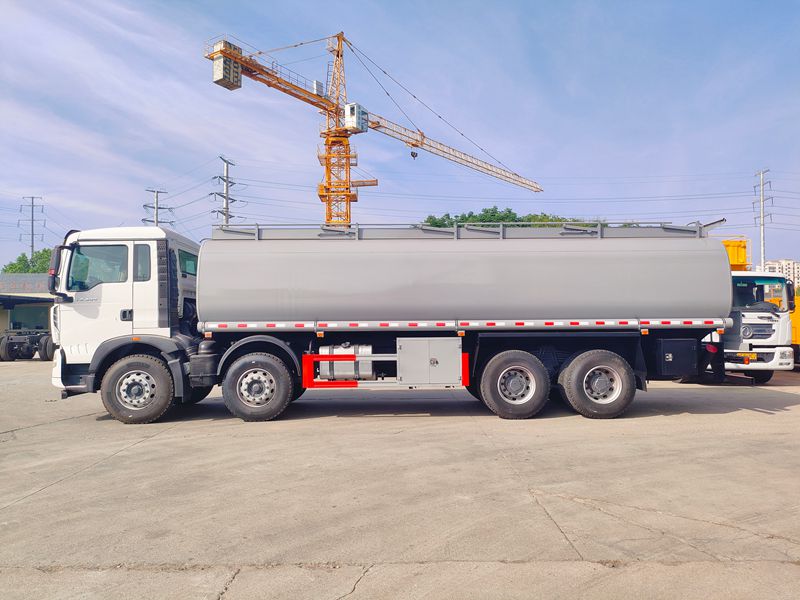Urban Short-Haul Delivery: Micro-Tankers for Emission Reduction
Cities face unique challenges in fuel delivery: congested roads, strict emission rules, and the need to serve small gas stations or commercial clients (like delivery fleets) with frequent, small-volume orders. Oil tanker truck for sale To address this, manufacturers are developing “micro-oil tanker trucks”—compact, low-emission vehicles tailored for urban use. Oil tanker truck for sale In Tokyo, Japan, a fleet of 200 electric micro-tankers now handles short-haul deliveries (under 50 kilometers) to downtown gas stations and logistics hubs. Oil tanker truck for sale These trucks have a 2,000-liter capacity—half the size of standard urban tankers—and produce zero tailpipe emissions, aligning with Tokyo’s goal of carbon-neutral urban transport by 2030 Oil tanker truck for sale.

“Downtown Tokyo has narrow streets and peak-hour congestion—standard tankers struggle to navigate and often cause traffic jams,”Oil tanker truck for sale says a fleet operator. “The micro-tankers are agile; they can park at small gas stations and make deliveries in 15 minutes instead of an hour. Plus, their electric motors are quiet, which is a big win for residential areas.” The fleet has reduced urban fuel delivery emissions by 35% and cut traffic delays caused by tanker trucks by 50%.
In Berlin, Germany,Oil tank truck micro-tankers run on renewable natural gas (RNG) sourced from municipal waste. Oil tank truck These trucks serve small businesses, such as restaurants and delivery companies,Oil tank truck that use diesel generators or vehicles. Oil tank truck The RNG-powered micro-tankers have a range of 250 kilometers and can refuel at dedicated RNG stations across the city. “Our clients want to reduce their carbon footprint, so they prefer fuel delivered by low-emission trucks,”Oil tank truck says a Berlin logistics firm owner Oil tank truck. “The RNG micro-tankers let us meet that demand while keeping operational costs competitive.”
Post-Disaster Energy Reconstruction: Planning with Tankers in Mind
Oil tank truck In the aftermath of natural disasters, oil tanker trucks are no longer just emergency fuel suppliers—they’re now integrated into pre-disaster planning to ensure faster energy recovery.Oil tank truck The Philippines, one of the most disaster-prone countries in the world, has launched the “Tanker-Powered Reconstruction Blueprint,”Oil tank truck which maps out pre-determined routes for oil tanker trucks to deliver fuel to critical infrastructure (hospitals, power plants, water treatment facilities) immediately after a disaster. The blueprint also designates “tanker staging areas” on the outskirts of high-risk cities, Diesel tankerwhere trucks are pre-positioned with fuel reserves during typhoon or earthquake seasons Diesel tanker.
“When Typhoon Mawar hit Cebu in 2024,Diesel tanker we had 50 tanker trucks staged 10 kilometers from the city,” says a Philippine energy official. “Within 6 hours of the storm passing, the trucks were delivering diesel to the city’s main power plant, which restored electricity to 30% of households within a day. Without the pre-planning, it would have taken 3 days to get fuel to the plant.” The blueprint has reduced post-disaster energy recovery time by an average of 40% in cities that adopt it Diesel tanker.
In Haiti,Diesel tanker which faces frequent hurricanes and earthquakes, oil tanker trucks are part of “Energy Recovery Kits” distributed to local communities.Diesel tanker Each kit includes a small oil tanker (500-liter capacity),Diesel tanker a portable generator, and maintenance tools. Community members are trained to operate the tanker and generator, so they can quickly restore power to schools and health clinics after a disaster Diesel tanker Diesel tanker. “Local ownership is key—communities know their area best and can respond faster than external teams,” says a disaster relief worker. “The tanker kits have helped 20 communities in southern Haiti restore energy within 48 hours of disasters Diesel tanker.”


